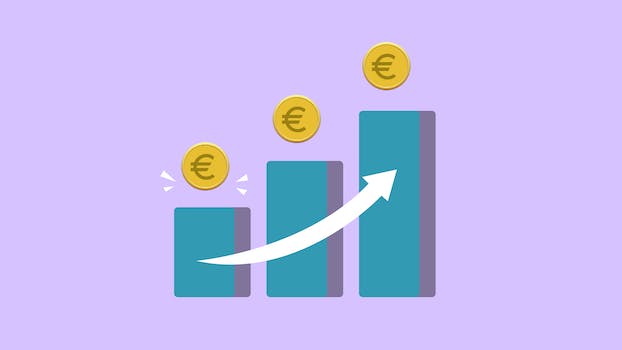How To Save More Than You Spend
Introduction

Saving more than you spend is a crucial financial habit that can help you achieve your long-term financial goals. It involves spending less than your income and putting the difference into savings or investments. In this article, we will discuss some practical tips on how to save more than you spend and build a strong financial foundation for your future.
5 Simple Ways to Cut Your Monthly Expenses
Saving money is a crucial aspect of financial stability. However, it can be challenging to save more than you spend, especially if you have a limited income. Fortunately, there are several ways to cut your monthly expenses and increase your savings. In this article, we will discuss five simple ways to save more than you spend.
1. Create a Budget
The first step to saving more than you spend is to create a budget. A budget is a financial plan that outlines your income and expenses. It helps you track your spending and identify areas where you can cut back. To create a budget, start by listing all your sources of income and your monthly expenses. Categorize your expenses into fixed and variable expenses. Fixed expenses are those that remain constant every month, such as rent, mortgage, and car payments. Variable expenses are those that fluctuate, such as groceries, entertainment, and clothing. Once you have a clear picture of your income and expenses, you can identify areas where you can cut back and save more.
2. Cut Back on Unnecessary Expenses
Cutting back on unnecessary expenses is an effective way to save more than you spend. Take a close look at your variable expenses and identify areas where you can cut back. For example, you can reduce your entertainment expenses by canceling your cable subscription and opting for a cheaper streaming service. You can also save money on groceries by buying generic brands and shopping for deals. Cutting back on unnecessary expenses requires discipline and sacrifice, but it can help you save a significant amount of money in the long run.
3. Use Coupons and Discounts
Using coupons and discounts is another way to save more than you spend. Many retailers offer coupons and discounts on their products and services. Take advantage of these offers to save money on your purchases. You can also use cashback apps and websites to earn cashback on your purchases. Cashback apps and websites offer a percentage of your purchase amount back to you as cashback. Using coupons and discounts requires some effort, but it can help you save a significant amount of money over time.
4. Reduce Your Energy Consumption
Reducing your energy consumption is an effective way to cut your monthly expenses. Energy bills can be a significant expense, especially during the summer and winter months. To reduce your energy consumption, start by turning off lights and appliances when not in use. You can also use energy-efficient light bulbs and appliances to reduce your energy consumption. Additionally, you can adjust your thermostat to a comfortable temperature and use a programmable thermostat to regulate your home’s temperature. Reducing your energy consumption not only helps you save money but also helps the environment.
5. Pay Off Your Debts
Paying off your debts is a crucial step to saving more than you spend. Debts such as credit card debts and loans can accumulate interest, making it difficult to save money. To pay off your debts, start by prioritizing your debts based on their interest rates. Focus on paying off debts with the highest interest rates first. You can also consider consolidating your debts into a single loan with a lower interest rate. Paying off your debts requires discipline and sacrifice, but it can help you save a significant amount of money in the long run.
In conclusion, saving more than you spend requires discipline, sacrifice, and effort. Creating a budget, cutting back on unnecessary expenses, using coupons and discounts, reducing your energy consumption, and paying off your debts are simple ways to cut your monthly expenses and increase your savings. By implementing these strategies, you can achieve financial stability and peace of mind.
Creating a Budget: Tips and Tricks for Sticking to It
Saving money is a crucial aspect of financial stability. However, it can be challenging to save more than you spend, especially if you don’t have a budget. Creating a budget is the first step towards saving more than you spend. A budget helps you track your expenses and income, and it enables you to make informed financial decisions. In this article, we will discuss tips and tricks for creating a budget and sticking to it.
The first step in creating a budget is to determine your income. Your income includes your salary, bonuses, and any other sources of income. Once you have determined your income, you need to track your expenses. Tracking your expenses involves recording all your expenses, including bills, groceries, and entertainment. You can use a spreadsheet or a budgeting app to track your expenses.
After tracking your expenses, you need to categorize them. Categorizing your expenses helps you identify areas where you can cut back on spending. Common expense categories include housing, transportation, food, entertainment, and utilities. Once you have categorized your expenses, you need to set a budget for each category. Your budget should be realistic and based on your income and expenses.
Sticking to your budget requires discipline and commitment. One way to stick to your budget is to avoid impulse buying. Impulse buying is buying something on a whim without considering its impact on your budget. To avoid impulse buying, you can create a shopping list and stick to it. You can also avoid shopping when you are hungry or tired, as this can lead to impulse buying.
Another way to stick to your budget is to avoid overspending on entertainment. Entertainment expenses can quickly add up, especially if you eat out frequently or go to the movies often. To save money on entertainment, you can look for free or low-cost activities, such as hiking, biking, or visiting a museum. You can also cook at home instead of eating out, and you can rent movies instead of going to the theater.
Reducing your housing expenses is another way to save more than you spend. Housing expenses, including rent or mortgage payments, utilities, and maintenance, can be a significant portion of your budget. To reduce your housing expenses, you can consider downsizing to a smaller home or apartment. You can also look for ways to reduce your utility bills, such as turning off lights when you leave a room or using energy-efficient appliances.
Finally, you can save more than you spend by setting financial goals. Financial goals can motivate you to stick to your budget and save more money. Your financial goals can include paying off debt, saving for a down payment on a house, or building an emergency fund. To achieve your financial goals, you need to prioritize them and make them a part of your budget.
In conclusion, creating a budget is the first step towards saving more than you spend. To create a budget, you need to determine your income, track your expenses, categorize your expenses, and set a budget for each category. Sticking to your budget requires discipline and commitment, and you can achieve this by avoiding impulse buying, reducing your entertainment and housing expenses, and setting financial goals. By following these tips and tricks, you can save more than you spend and achieve financial stability.
Maximizing Your Savings: How to Make the Most of Coupons and Sales
Saving money is a crucial aspect of financial stability. However, it can be challenging to save more than you spend, especially when you have bills to pay and other financial obligations. Fortunately, there are several ways to maximize your savings and make the most of coupons and sales.
One of the most effective ways to save money is by using coupons. Coupons are a great way to get discounts on products and services that you need. They are available in various forms, including online coupons, printable coupons, and mobile coupons. To make the most of coupons, you need to be strategic in your approach.
First, you need to identify the products or services that you need and look for coupons that offer discounts on those items. You can find coupons in newspapers, magazines, and online coupon websites. Once you have identified the coupons that you need, you should organize them in a way that makes them easy to access when you need them.
Another way to maximize your savings is by taking advantage of sales. Sales are a great way to get discounts on products and services that you need. They are available in various forms, including seasonal sales, clearance sales, and holiday sales. To make the most of sales, you need to be strategic in your approach.
First, you need to identify the products or services that you need and look for sales that offer discounts on those items. You can find sales in newspapers, flyers, and online shopping websites. Once you have identified the sales that you need, you should organize them in a way that makes them easy to access when you need them.
In addition to using coupons and taking advantage of sales, you can also save money by shopping at discount stores. Discount stores offer products and services at lower prices than traditional retail stores. They are a great way to save money on everyday items such as groceries, clothing, and household items.
To make the most of discount stores, you need to be strategic in your approach. First, you need to identify the products or services that you need and look for discount stores that offer those items. You can find discount stores in your local area or online. Once you have identified the discount stores that you need, you should organize them in a way that makes them easy to access when you need them.
Another way to save money is by using cashback apps. Cashback apps are mobile applications that offer cashback rewards for purchases made through the app. They are a great way to save money on everyday purchases such as groceries, clothing, and household items.
To make the most of cashback apps, you need to be strategic in your approach. First, you need to identify the cashback apps that offer rewards for the products or services that you need. You can find cashback apps in your app store or online. Once you have identified the cashback apps that you need, you should organize them in a way that makes them easy to access when you need them.
In conclusion, saving more than you spend is a crucial aspect of financial stability. By using coupons, taking advantage of sales, shopping at discount stores, and using cashback apps, you can maximize your savings and make the most of your money. With a little bit of planning and organization, you can save money on everyday purchases and achieve your financial goals.
Investing in Your Future: Why Saving Now is Important
As we go through life, we often find ourselves spending more than we save. It’s easy to get caught up in the moment and forget about the future. However, it’s important to remember that saving now can have a significant impact on our future financial stability.
One of the first steps to saving more than you spend is to create a budget. This may seem like a daunting task, but it’s essential to understand where your money is going. Start by tracking your expenses for a month and categorizing them into necessary and discretionary spending. From there, you can determine where you can cut back and allocate more funds towards savings.
Another way to save more than you spend is to set financial goals. Whether it’s saving for a down payment on a house or building an emergency fund, having a specific goal in mind can help motivate you to save. It’s important to make these goals realistic and achievable, so you don’t become discouraged.
One of the most effective ways to save more than you spend is to automate your savings. This means setting up automatic transfers from your checking account to your savings account. By doing this, you won’t even have to think about saving, and it will become a habit. Start small and gradually increase the amount you transfer each month.
Investing is another way to save more than you spend. While it may seem intimidating, investing can be a great way to grow your wealth over time. Start by researching different investment options and determining your risk tolerance. Consider working with a financial advisor to help guide you through the process.
It’s also important to be mindful of your spending habits. Before making a purchase, ask yourself if it’s something you really need or if it’s just a want. Consider waiting a few days before making a purchase to determine if it’s something you truly need. By being mindful of your spending, you can avoid unnecessary purchases and allocate more funds towards savings.
Finally, it’s important to remember that saving more than you spend is a long-term goal. It’s not something that will happen overnight, and it requires discipline and dedication. However, the benefits of saving now can have a significant impact on your future financial stability. By creating a budget, setting financial goals, automating your savings, investing, being mindful of your spending habits, and staying committed to the process, you can save more than you spend and invest in your future.
Breaking Bad Habits: How to Overcome Impulse Spending
Saving money is a crucial aspect of financial stability. However, it can be challenging to save more than you spend, especially if you have a habit of impulse spending. Impulse spending is a common problem that affects many people, and it can lead to financial difficulties if not addressed. In this article, we will discuss some tips on how to overcome impulse spending and save more than you spend.
The first step in overcoming impulse spending is to identify the triggers that lead to it. Triggers can be anything from stress, boredom, or even peer pressure. Once you have identified your triggers, you can take steps to avoid them or find healthier ways to deal with them. For example, if stress is a trigger for you, you can try meditation or exercise to help you relax instead of shopping.
Another way to overcome impulse spending is to create a budget and stick to it. A budget is a plan that outlines your income and expenses, and it helps you to manage your money effectively. When creating a budget, it is essential to be realistic about your expenses and prioritize your needs over your wants. This means that you should allocate more money to essential expenses such as rent, food, and utilities, and less money to non-essential expenses such as entertainment and shopping.
It is also important to track your spending to ensure that you are sticking to your budget. You can use a budgeting app or a spreadsheet to track your expenses and see where your money is going. This will help you to identify areas where you can cut back and save more money.
One of the most effective ways to save more than you spend is to automate your savings. This means that you set up automatic transfers from your checking account to your savings account each month. By doing this, you are paying yourself first and ensuring that you are saving money before you have a chance to spend it. This is a great way to build up your savings over time and achieve your financial goals.
Another way to save more than you spend is to avoid debt. Debt can be a significant obstacle to saving money, as it can eat up a large portion of your income in interest payments. If you have debt, it is essential to prioritize paying it off as quickly as possible. You can do this by making extra payments each month or by consolidating your debt into a lower interest loan.
Finally, it is important to be mindful of your spending habits and make conscious choices about how you spend your money. This means that you should think carefully before making a purchase and ask yourself if it is something that you really need or if it is just a want. By being mindful of your spending, you can avoid impulse purchases and save more money in the long run.
In conclusion, saving more than you spend is a crucial aspect of financial stability. Overcoming impulse spending can be challenging, but it is possible with the right strategies. By identifying your triggers, creating a budget, tracking your spending, automating your savings, avoiding debt, and being mindful of your spending habits, you can save more money and achieve your financial goals. Remember, it takes time and effort to develop good financial habits, but the rewards are well worth it in the end.
Conclusion
Conclusion: Saving more than you spend is a crucial financial habit that can help you achieve your long-term financial goals. To save more, you need to create a budget, track your expenses, cut unnecessary expenses, and find ways to increase your income. By following these simple steps, you can build a strong financial foundation and secure your future. Remember, saving is not just about cutting back on expenses, but also about making smart financial decisions that can help you grow your wealth over time.







